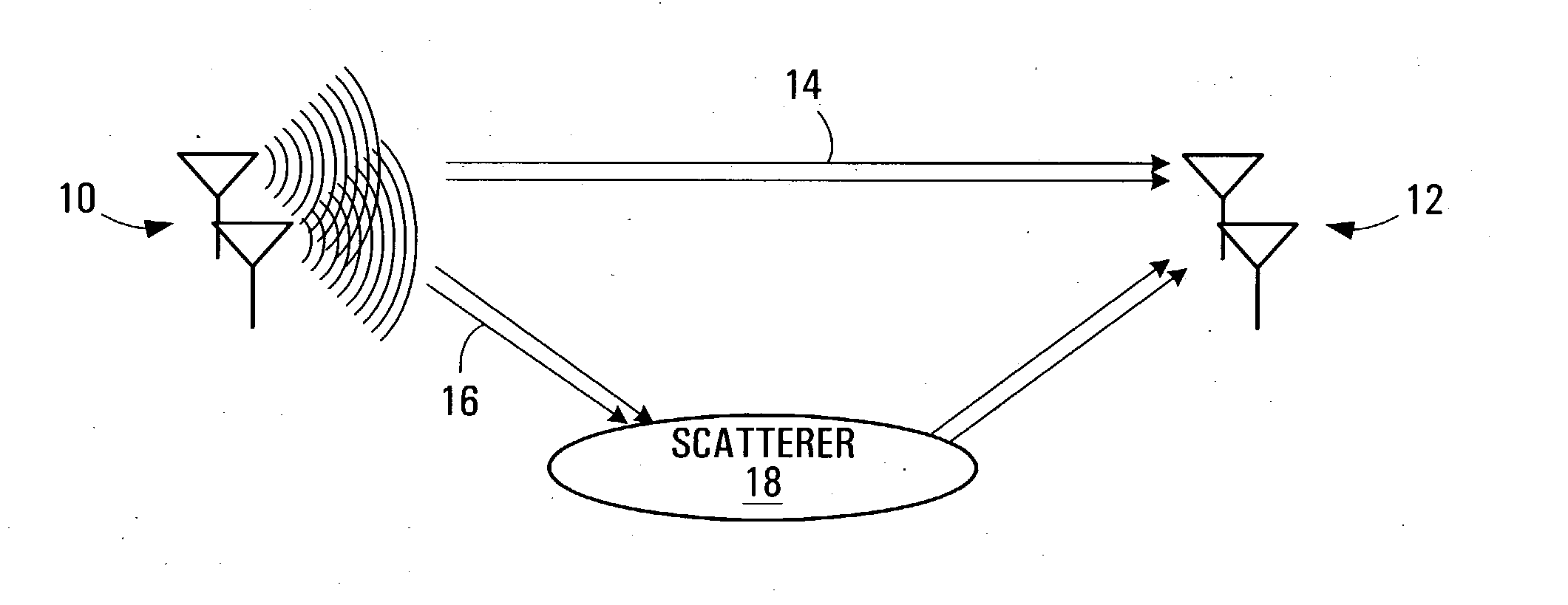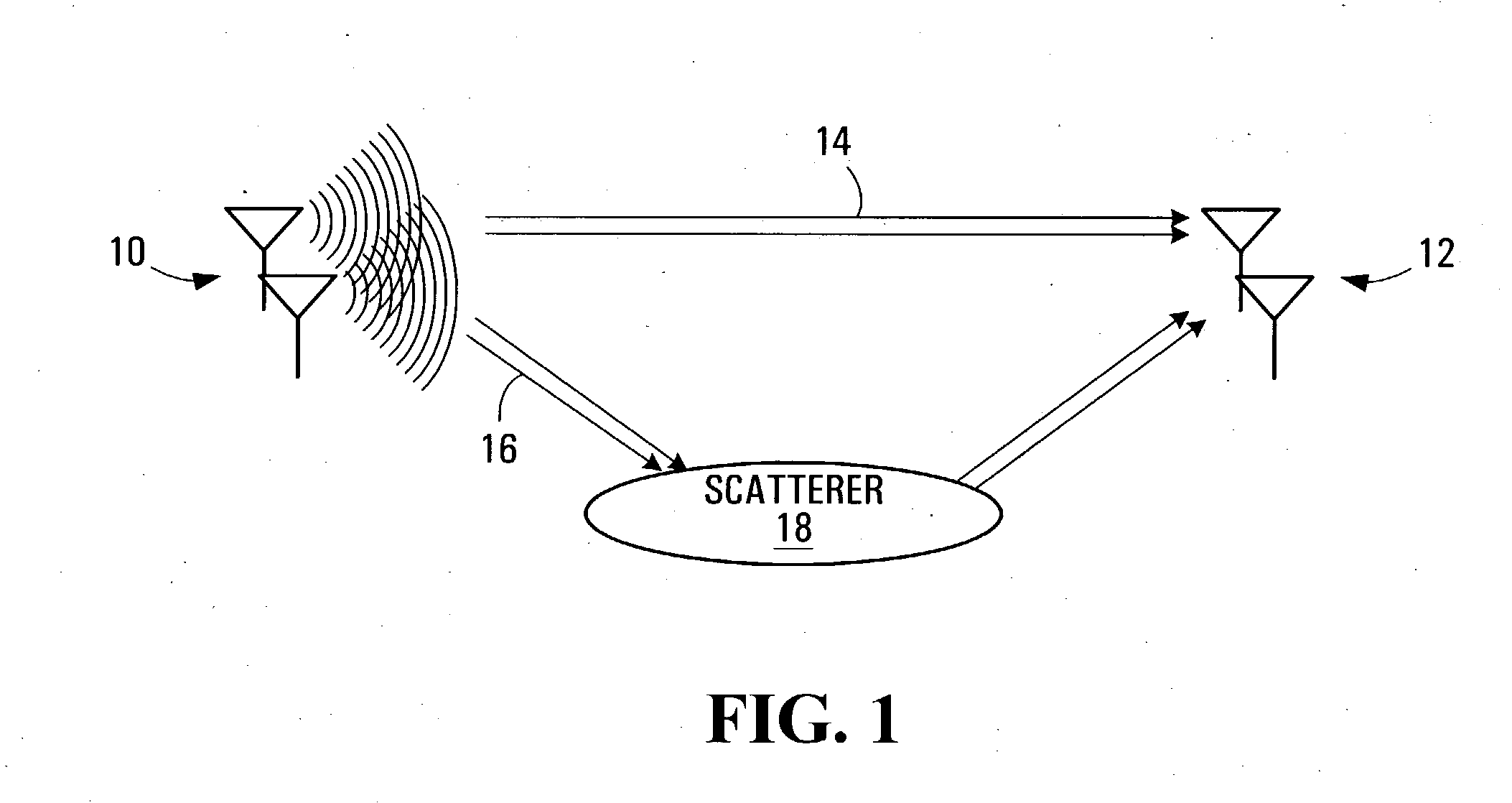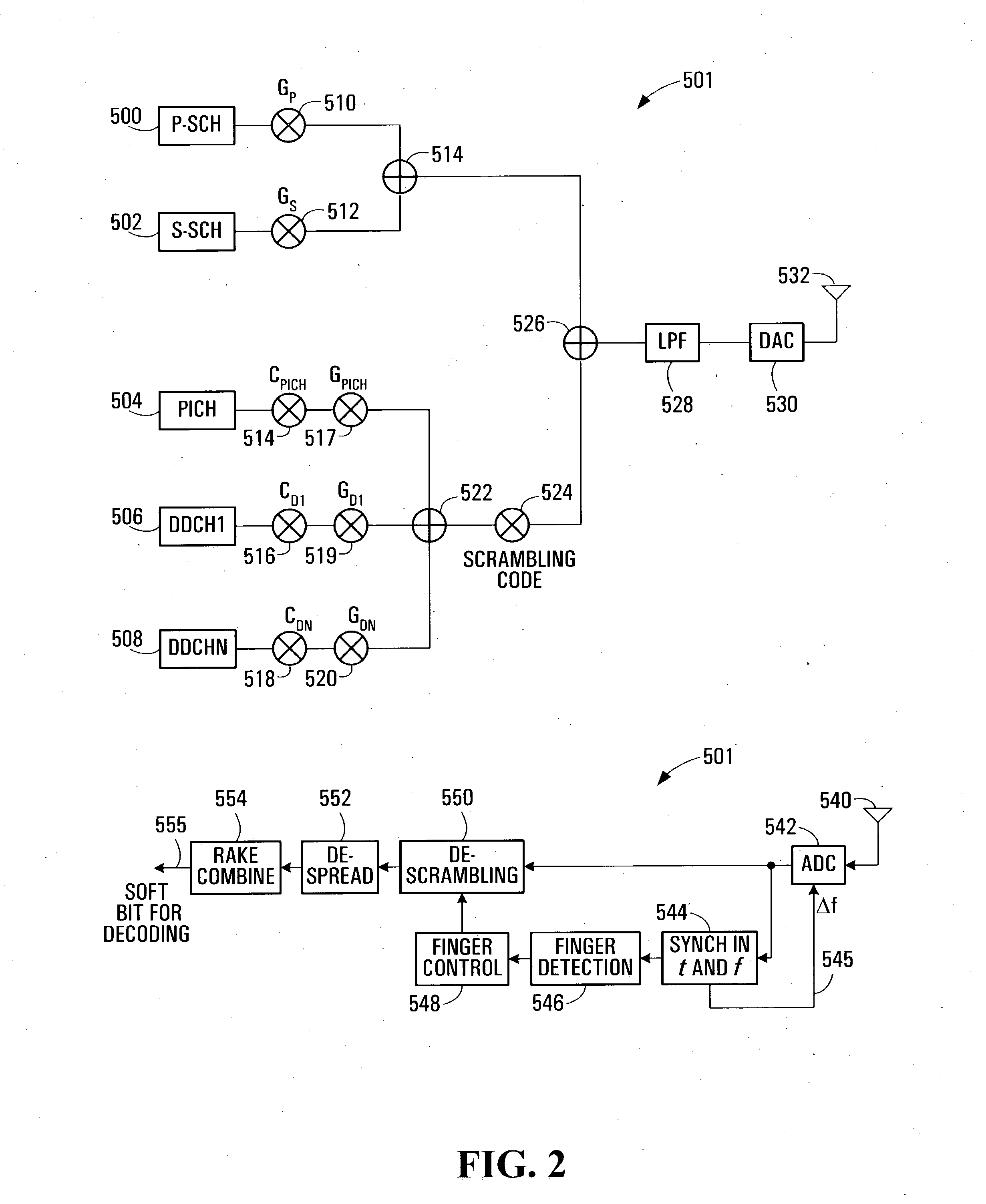Virtual MIMO transmitters, receivers, systems and methods
a transmitter and receiver technology, applied in the field of mimo (multiple input, multiple output) transmitters and receivers, systems and methods, can solve the problems of inability to distinguish the m/sub>t/sub>individual transmitted signals from one another, lack of convincing proof of the proposed theories, and inability to achieve the effect of promising approaches
- Summary
- Abstract
- Description
- Claims
- Application Information
AI Technical Summary
Benefits of technology
Problems solved by technology
Method used
Image
Examples
embodiment
Multiple Receiver Embodiment
In the previous section, only multiple transmitter and single receiver systems have been discussed. However, more generally, embodiments can be used either in single receiver antenna systems or multiple receiver antennae system. In fact, the technology can be fully exploited in MIMO systems to produce a robust transceiver system while maintaining a low cost. For example, 2×4 MIMO system performance can be achieved with 2×2 MIMO systems with the invented technology built in. FIG. 14 illustrates a 2×2 MIMO receiver diagram provided by an embodiment of the invention that has similar performance to a MIMO 2×4 system.
Two antennae 400,402 are used to receive the incoming signals. A RF receiver 404 accepts the signal from antenna 400 and from there it proceeds to the ADC 406. The stream is split into even and odd paths with sample collector 408 and then framed 410 before undergoing prefix treatment 412,416. The processing done in combining the received signal...
PUM
 Login to View More
Login to View More Abstract
Description
Claims
Application Information
 Login to View More
Login to View More - R&D
- Intellectual Property
- Life Sciences
- Materials
- Tech Scout
- Unparalleled Data Quality
- Higher Quality Content
- 60% Fewer Hallucinations
Browse by: Latest US Patents, China's latest patents, Technical Efficacy Thesaurus, Application Domain, Technology Topic, Popular Technical Reports.
© 2025 PatSnap. All rights reserved.Legal|Privacy policy|Modern Slavery Act Transparency Statement|Sitemap|About US| Contact US: help@patsnap.com



